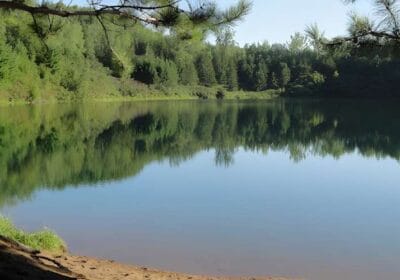If you are looking for a breathtaking destination in Colorado that offers stunning natural landscapes, hiking trails, and picturesque views, then Maroon Bells-Snowmass Wilderness is a must-visit place for you. This article will guide you through the discovery of this beautiful wilderness area, from its history and location to its unique features, and the best things to do while you’re there.
Overview of Maroon Bells-Snowmass Wilderness
Maroon Bells-Snowmass Wilderness is located in the Elk Mountains of the White River National Forest, near the towns of Aspen and Snowmass Village in Colorado. It covers over 180,000 acres and includes the Maroon Bells, which are two of the most photographed peaks in North America. The Maroon Bells-Snowmass Wilderness is also home to numerous lakes, streams, and waterfalls, as well as a diverse range of wildlife, including black bears, moose, elk, and mountain goats.
History of Maroon Bells-Snowmass Wilderness
Maroon Bells-Snowmass Wilderness has a rich history that dates back to the Ute and Apache tribes who lived in the area for centuries. In the late 1800s, the mining industry began to flourish, and prospectors came to the region to search for gold, silver, and lead. The mining industry declined in the early 1900s, and the area began to attract visitors who were drawn to its natural beauty and recreational opportunities.
In 1964, Maroon Bells-Snowmass Wilderness was officially designated as a wilderness area by the US Congress to preserve its unique natural features and wildlife. Today, the area is managed by the US Forest Service and is a popular destination for outdoor enthusiasts.
Activities to do in Maroon Bells-Snowmass Wilderness
Maroon Bells-Snowmass Wilderness offers a wide range of outdoor activities for visitors of all ages and abilities. Here are some of the top things to do:
Hiking
Maroon Bells-Snowmass Wilderness is home to over 100 miles of hiking trails, ranging from easy walks to challenging treks. The Maroon Lake Scenic Trail is a popular option for families and offers stunning views of the Maroon Bells. For more experienced hikers, the Four Pass Loop is a challenging 26-mile trek that takes you through some of the most beautiful and remote areas of the wilderness.
Camping
Camping is allowed in designated areas throughout the wilderness, and there are several campgrounds nearby, including Maroon Creek and Silver Bell. If you prefer a more secluded camping experience, backcountry camping is also allowed with a permit.
Fishing
Maroon Bells-Snowmass Wilderness is a popular destination for anglers, with numerous lakes and streams offering opportunities to catch trout, bass, and other fish. A Colorado fishing license is required, and fishing regulations apply.
Wildlife Viewing
Maroon Bells-Snowmass Wilderness is home to a diverse range of wildlife, including black bears, mountain goats, bighorn sheep, and elk. Visitors are encouraged to observe wildlife from a safe distance and to follow Leave No Trace principles to minimize their impact on the ecosystem.
Tips for Visiting Maroon Bells-Snowmass Wilderness
Here are some tips to help you make the most of your visit to Maroon Bells-Snowmass Wilderness:
- The wilderness is located at a high elevation, so be prepared for changes in weather and temperature.
- Dogs are allowed in the wilderness but must be kept on a leash at all times.
- Leave No Trace principles apply, so pack out all trash and respect the natural environment.
- Parking at the Maroon Bells Scenic Area can be difficult during peak season, so consider taking a shuttle from Aspen or Snowmass Village to the trailhead.
- If you plan to camp, make sure to obtain a permit in advance and follow all camping regulations.
- Respect wildlife and their natural habitats by observing them from a safe distance and not feeding them.
Best Times to Visit Maroon Bells-Snowmass Wilderness
Maroon Bells-Snowmass Wilderness is a popular destination year-round, but the best time to visit depends on your preferred activities and the weather conditions. The summer months (June-August) offer the best weather for hiking and camping, but the trails can be crowded during peak season. Fall (September-October) is a great time to visit for leaf-peeping and wildlife watching, as the leaves on the aspen trees turn a golden color and the animals become more active. Winter (December-March) offers opportunities for snowshoeing, cross-country skiing, and backcountry skiing, but be prepared for cold and snowy conditions.
Conclusion
Maroon Bells-Snowmass Wilderness is a natural gem of Colorado, offering visitors a unique opportunity to explore and experience the beauty of the Rocky Mountains. With its stunning landscapes, diverse wildlife, and abundant recreational opportunities, Maroon Bells-Snowmass Wilderness is a must-visit destination for anyone who loves the outdoors. So pack your bags, grab your hiking boots, and come discover the beauty of Maroon Bells-Snowmass Wilderness in Colorado.
FAQs
- Can I bring my dog to Maroon Bells-Snowmass Wilderness?
- Yes, dogs are allowed in the wilderness but must be kept on a leash at all times.
- Do I need a permit to camp in Maroon Bells-Snowmass Wilderness?
- Yes, you need a permit to camp in designated areas within the wilderness.
- What is the best time to visit Maroon Bells-Snowmass Wilderness?
- The best time to visit depends on your preferred activities and the weather conditions. Summer is great for hiking and camping, fall for leaf-peeping and wildlife watching, and winter for snow sports.
- How long does it take to hike the Four Pass Loop?
- The Four Pass Loop is a challenging 26-mile trek that typically takes 3-4 days to complete.
- What should I do if I encounter wildlife in Maroon Bells-Snowmass Wilderness?
- Observe wildlife from a safe distance and do not approach or feed them. Follow Leave No Trace principles to minimize your impact on their habitat.





